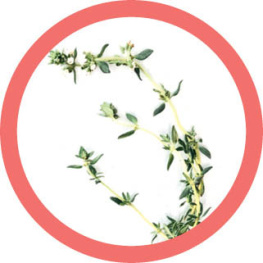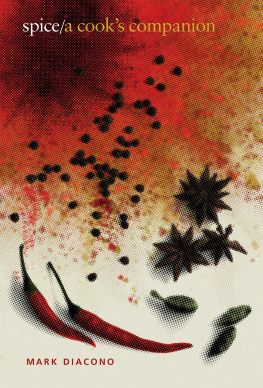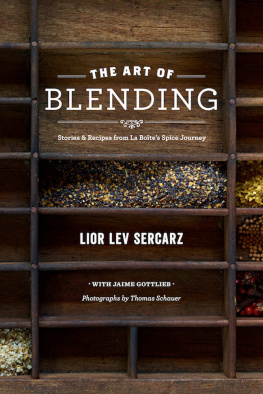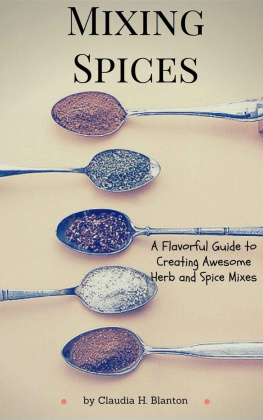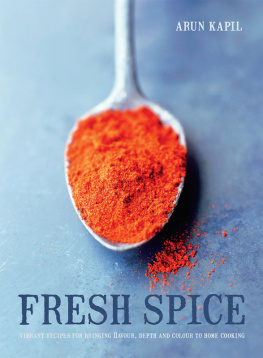All rights reserved.
Published in the United States by Clarkson Potter/Publishers, an imprint of the Crown Publishing Group, a division of Penguin Random House LLC, New York.
CLARKSON POTTER is a trademark and POTTER with colophon is a registered trademark of Penguin Random House LLC.
Names: Sercarz, Lior Lev, author. | Gottlieb, Jaime, author. | Schauer, Thomas, 1969- photographer (expression) | Westcott, Nadine Bernard, illustrator.
Title: The spice companion : a guide to the world of spices / Lior Lev Sercarz, founder of La Bote with Jaime Gottlieb ; photography by Thomas Schauer ; illustrations by Nadine Bernard Westcott.
Description: First edition. | New York : Clarkson/Potter Publishers, [2016] | Includes index.
Identifiers: LCCN 2016004584 (print) | LCCN 2016014614 (ebook) | ISBN 9781101905463 (hardcover) | ISBN 9781101905470 (eISBN) | ISBN 9781101905470 (ebook)
Subjects: LCSH: Spices.
Classification: LCC TX406 .S47 2016 (print) | LCC TX406 (ebook) | DDC 641.3/383dc23
FOREWORD
I started cooking in 1982, and from that moment I began developing what I call the French Art of Spices. Much like a nose in perfumery, I consider myself a palate in the creation of flavors. In 1998, Lior Lev Sercarz joined us as part of his internship with the Institut Paul Bocuse. He began his training at Les Maisons de Bricourt by learning bread baking in our wood oven, pastry, as well as working in the kitchen. In time, we started sharing our ideas and thoughts about spices and the stories they told about his personal narrative in Israel and mine inspired by the French East India Company. Lior was able to witness the creation of our brand pices-Roellinger and became involved in our first communications with small producers and farmers around the world, of which we now work with about 1,200.
This book is a marvelous guide to what we call spicesthe universe of fruits, grains, stems, flowers, and roots that grow in faraway places. It offers unique insights into the very things that enhance the flavors of everything we eat, providing home cooks and chefs alike access to something they dont always consider in their daily lives.
Spices create a richness and complexity, delivering a mouthful of tastes and aromas; they speak of our relationship with the unknown and unfamiliar, and of our encounters with other places in the world. They allow us to consume the vast horizons, capturing the sensations of every country and the cuisines of every place without ever leaving home. With this book, Lior enables each and every one of us to access this Garden of Eden.
OLIVIER ROELLINGER,
chef-owner, LES MAISONS DE BRICOURT,
Brittany, France
INTRODUCTION
I was born and raised on Kibbutz Dan in northern Israel. Although it was a great place to grow up as a child, food was the least exciting thing about it. The generation of Jews who escaped Europe before the war, or came after, built this country on the idea that food was purely a means of survival. Unfortunately, my kibbutz was also founded by these same eastern Europeans, who left behind many of the culinary traditions of their native homes; all I can remember from my early days is boiled, flavorless dishes too often oversweetened or way too vinegary.
Luckily, we took trips to Kiryat Shmona, the nearest town, and Tel Aviv, where street food offered a variety of new flavors and ingredients. Keep in mind that until the early 90s, the culinary scene in Israel, generally speaking, was as interesting as hummus in a can! The best meals were at home, and if you were lucky enough, you had a Moroccan or Persian friend who would invite you over for dinner.
There were also interesting culinary influences from our neighbors just over the Lebanese border, only a half mile away. We shopped and ate in areas that are now part of Palestine, and there were a few Druze villages just twenty minutes north where we could enjoy freshly made falafel, grilled meats, and sweets, as well as a delicious Arabic coffee spiced with cardamom. These cultures greatly impacted our meals at home, bringing new ingredients and dishes into our limited repertoire. Today, Israel has close to seventy different ethnic groups and, in turn, access to each of their uniquely authentic cuisines. We are finally seeing a culinary revolution that is as exciting as anywhere else on the planet. Israeli cuisine has certainly come a long way.
Growing up in the Galilee did have its advantages: we were surrounded by nature. The Dan River, which flows into the Jordan, brought schools of rainbow trout, which wed catch, stuff to the gills with wild herbs, and cook whole, simply, on the grill. Within reach were sprawling apple orchards, cornfields, and citrus groves. As kids we would venture out and fill up on everything we could pick ourselves, especially since we knew what was waiting for us back at the communal dining room for dinner.
Still, not every dish in the kibbutz was worth avoiding. One highlight from those days was the flatbreads my friends and I would bake in makeshift dirt ovens and eat with sour labneh cheese and fragrant zaatar, a mix of sesame, sumac, thyme, and other herbs. Picking fresh thyme, oregano, or rosemary was a matter of going out into the garden or into the nearby fields where they grew wild. (To this day, I have a hard time paying for herbs packed in plastic clamshells at the supermarket.)
After we left the kibbutz, I started cooking because my mother worked late and my sisters and I needed to eat. It was that simple. She would leave ingredients and directions out on the counter, and we were on our own. Often the recipes would hail from one of my familys different culturesmy mothers father was Tunisian and his wife was Transylvanian.


